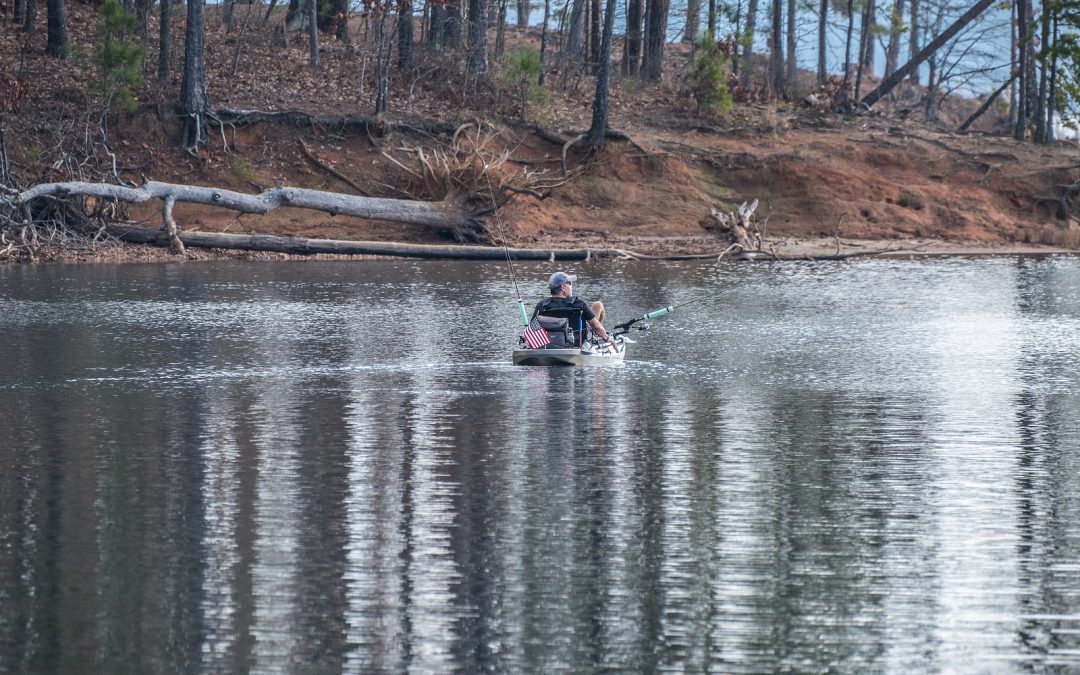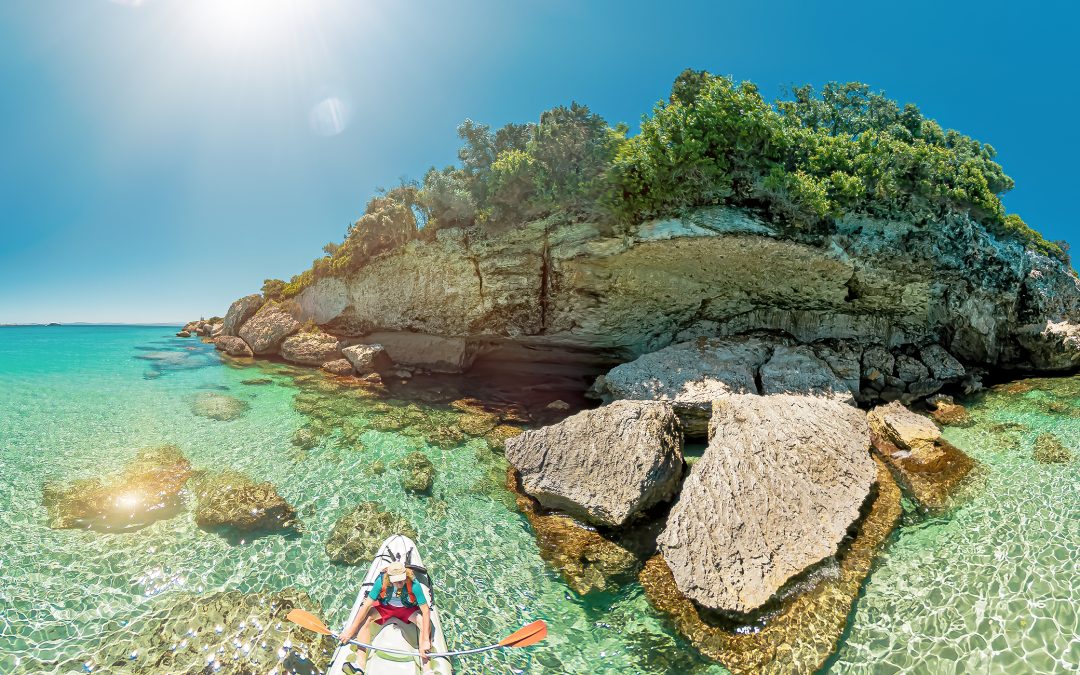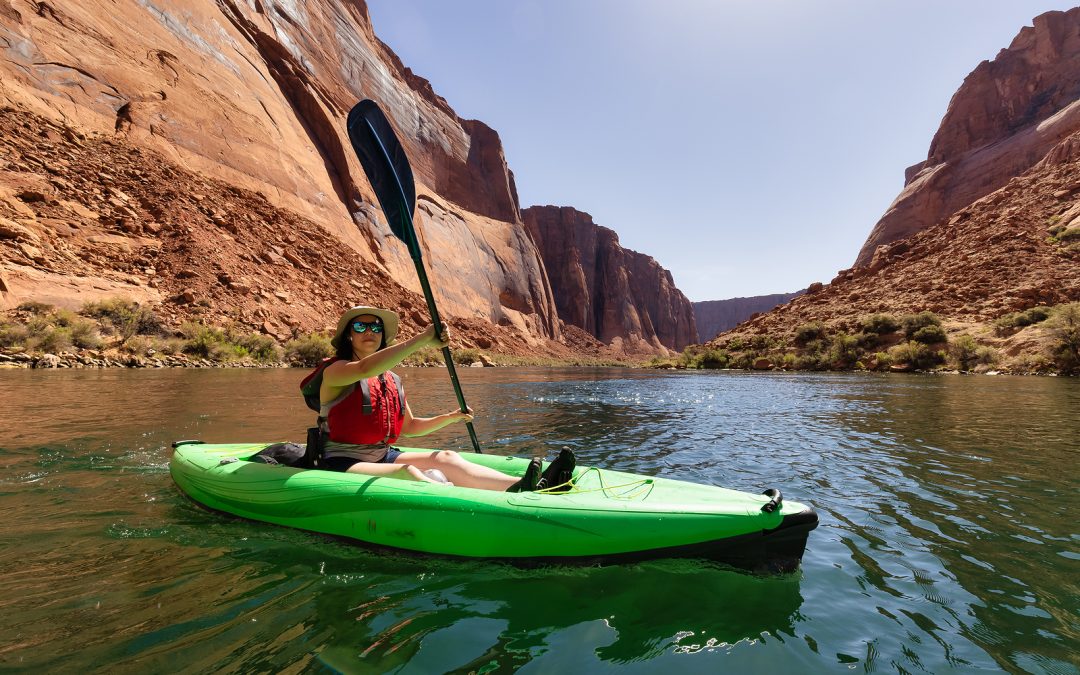Kayaking is a fun way to explore lakes, rivers, and oceans. Many people wonder how long it takes to kayak a certain distance.
The answer depends on several things, like your skill level and the water conditions.

For most kayakers, it takes about 20 to 30 minutes to paddle one mile. This is based on an average speed of 2 to 3 miles per hour.
Keep in mind that this can change based on factors like wind, currents, and your own strength.
Longer trips need more planning. A 10-mile kayak adventure might take about 5 hours. But remember, you’ll need breaks for rest and water.
It’s smart to plan extra time for your trip to stay safe and have fun.
Key Takeaways
- Kayaking speed varies based on skill level and conditions
- Planning is key for longer kayak trips
- Safety and proper equipment are essential for a good kayaking experience
Kayaking Essentials
Before hitting the water, kayakers need to know about different kayak types, essential gear, and basic paddling techniques. These elements are key to a safe and enjoyable kayaking experience.
Understanding Kayak Types
Kayaks come in various styles for different uses. Sit-on-top kayaks are great for beginners. They’re stable and easy to get back on if you fall off.
Recreational kayaks are good for calm waters like lakes and slow-moving rivers. They’re wider and more stable than other types.
Sea kayaks are longer and narrower. They’re made for open water and can handle waves and currents better. Whitewater kayaks are short and very maneuverable for rapids.
Inflatable kayaks are portable and easy to store. They’re good for occasional use but may not perform as well as hard-shell kayaks.
Necessary Equipment
A life jacket is the most important safety item for kayaking. Always wear one that fits well and is made for paddling.
A paddle is another must-have. Choose one that’s the right length for your height and kayak width. Paddles come in different materials like aluminum, plastic, and carbon fiber.
Other essential gear includes:
- Waterproof bag for personal items
- Sun protection (hat, sunscreen, sunglasses)
- Water bottle
- First-aid kit
- Whistle for emergencies
- Proper clothing for the weather
For longer trips, bring snacks, a change of clothes, and a map or GPS device.
Basic Skills and Techniques
Learning proper paddling technique is crucial for efficient kayaking.
The basic forward stroke involves reaching forward, planting the paddle in the water, and pulling it back alongside the kayak.
To turn, use a sweep stroke. Reach out to the side and make a wide arc with the paddle. For quick turns, try a bow draw stroke on one side of the kayak.
Practice getting in and out of your kayak safely. In shallow water, straddle the kayak and lower yourself into the seat. On shore, sit in the kayak and scoot forward into the water.
Learn how to exit a capsized kayak safely. Practice this skill in calm, shallow water before venturing out.
Planning Your Trip

Good trip planning is key for a successful kayaking adventure. It helps ensure safety, enjoyment, and the right level of challenge for paddlers.
Choosing a Location
Pick a kayaking spot that fits your skill level and interests. Beginners should start with calm lakes or slow-moving rivers. More experienced paddlers can try faster rivers or coastal areas.
Consider these factors:
- Distance from home
- Scenery and wildlife
- Water conditions
- Available facilities
Look at maps or ask local kayaking groups for suggestions. Some popular locations include national parks, state parks, and designated water trails.
Determining the Route
Map out your kayaking path before you go. This helps estimate trip time and plan for rest stops.
Use these steps:
- Measure the total distance
- Check for obstacles or portages
- Identify entry and exit points
- Mark potential rest areas
A typical kayaking speed is 2-4 miles per hour. Add extra time for breaks, sightseeing, and unexpected delays.
For a 3-mile trip, plan for about 1 hour and 15 minutes on the water.
Weather Considerations
Check the weather forecast before your trip. Weather can greatly affect kayaking conditions and safety.
Key weather factors:
- Wind speed and direction
- Temperature
- Chance of rain or storms
- Water temperature
Pack appropriate gear based on the forecast. This may include rain gear, sun protection, or extra layers. Be prepared to change plans if weather conditions become unsafe.
Emergency supplies like a fleece jacket, rain gear, and a headlamp are important for unexpected weather changes. Always have a backup plan in case conditions worsen.
Duration Factors

Many things affect how long a kayaking trip takes. Let’s look at the main factors that impact trip time.
Paddler’s Experience Level
New kayakers often paddle slower than experienced ones. Beginners may take breaks more often and struggle with technique. This slows them down.
Experienced kayakers move faster. Their strokes are more efficient and they tire less quickly.
Seasoned paddlers can maintain speeds of 4-5 mph in touring kayaks.
Skills like reading water and navigating also speed up trips. Experts know how to use currents to their advantage and pick better routes.
Distance and Conditions
The length of the trip is key. Longer distances take more time.
A mile typically takes 20-30 minutes to kayak, but this varies based on conditions.
Water type matters. River currents can speed up or slow down paddlers. Ocean waves and tides affect speed too.
Wind is a big factor. Headwinds slow kayakers down, while tailwinds help them move faster.
Water temperature also impacts paddling speed. Cold water tires people out more quickly.
Breaks and Rest Periods
Kayakers need breaks on long trips. Rest stops add to total trip time.
Short water breaks might last 5-10 minutes. Lunch stops could be 30 minutes or more.
The number of breaks depends on the paddler’s fitness and trip length.
Sightseeing affects duration too. Stops to enjoy views or take photos increase trip time.
Some kayakers plan extra time for exploring. Bathroom breaks are necessary on longer trips and add to the total time as well.
Physical and Safety Considerations

Kayaking requires physical fitness and knowledge of safety practices. Proper preparation and emergency procedures are key to enjoying this water sport responsibly.
Stamina and Fitness
Kayaking is a physically demanding activity. It works the upper body, core, and back muscles.
Paddlers need good arm and shoulder strength to maneuver the kayak. A strong core helps with balance and stability.
Beginners should start with short trips of 1-2 hours. As fitness improves, kayakers can tackle longer journeys.
Regular cardio exercise helps build endurance for extended paddling sessions.
Stretching before and after kayaking prevents muscle soreness. Proper hydration is crucial, especially on hot days. Snacks provide energy for longer outings.
Safety Guidelines
Wearing a personal flotation device (PFD) is essential for all kayakers. PFDs should fit snugly and be worn at all times on the water.
Checking weather conditions before a trip is crucial. Avoid kayaking in strong winds or storms and be aware of water temperature.
Key safety gear includes:
- Whistle or horn for signaling
- Bilge pump for removing water
- Paddle float for self-rescue
- First aid kit
Kayakers should always inform someone of their trip plans and expected return time.
Emergency Procedures
Knowing how to handle emergencies is vital for kayak safety.
Practice self-rescue techniques like the wet exit and re-entry.
If capsized, stay calm and hold onto the kayak. It provides flotation and is easier for rescuers to spot.
In cold water, get as much of your body out of the water as possible to prevent hypothermia.
Carry a waterproof phone or radio for emergencies. Know how to signal for help using arm movements or a whistle. Learn basic first aid to handle minor injuries on the water.
Trip Examples and Estimates

Kayak trip durations vary based on distance, pace, and conditions. Let’s look at some common trip types and how long they typically take.
Day Trips
A short 3-mile kayak trip usually takes about 1 hour and 15 minutes. This assumes a moderate pace of 3 miles per hour with a 15-minute buffer.
For longer day trips, paddlers might cover 10-15 miles. At an average speed of 2-3 mph, this could take 4-7 hours.
Factors affecting trip time include:
- Paddler’s skill level
- Water conditions (current, wind)
- Number of breaks taken
- Type of kayak used
It’s wise to plan extra time for unexpected delays or extended rest stops.
Multi-Day Expeditions
Multi-day kayaking trips can range from weekend getaways to week-long adventures. A typical two-day trip might cover 20-30 miles total.
Example itinerary:
- Day 1: Paddle 12-15 miles (6-8 hours)
- Evening: Set up camp, rest
- Day 2: Paddle remaining 8-15 miles (4-7 hours)
Longer expeditions require careful planning. Paddlers should aim for 15-20 miles per day, accounting for:
- Rest days
- Weather delays
- Sightseeing stops
Sharing trip details with a friend is crucial for safety. This includes the route, expected return time, and emergency contacts.
Conservation and Etiquette

Kayaking allows people to enjoy nature up close, but it’s vital to protect the environment while paddling.
Following some simple rules helps keep waterways clean and wildlife safe.
Kayaking etiquette involves showing respect to other paddlers and the surroundings.
Paddlers should stay a good distance from others to avoid collisions and give everyone space to enjoy the scenery.
Kayakers must practice “Leave No Trace” principles. This means taking out all trash, even small items like food wrappers.
It also involves avoiding damage to plants and wildlife habitats along shorelines.
Noise should be kept to a minimum, especially in natural areas. Loud voices or music can disturb animals and other kayakers trying to enjoy the peace and quiet.
Respectful wildlife viewing is key when kayaking.
Paddlers should keep their distance from animals and never feed or touch them. This helps protect both the wildlife and kayakers.
Using designated launch sites prevents erosion of shorelines. Kayakers should stick to established paths when carrying their boats to and from the water.
Post-Kayaking Activities

After a kayaking trip, it’s important to properly care for your equipment and body.
Start by rinsing your kayak and gear with fresh water to remove salt, sand, or debris.
Dry your kayak and equipment thoroughly before storage. This helps prevent mold and extends the life of your gear.
Stretch your muscles to prevent soreness. Focus on your arms, shoulders, back, and legs. Hold each stretch for 15-20 seconds.
Rehydrate by drinking plenty of water. Eat a balanced meal to replenish energy stores.
Consider these post-kayaking activities:
- Take a relaxing walk to cool down
- Have a picnic with friends or family
- Go for a swim if conditions allow
- Practice yoga to improve flexibility
- Write in a journal about your experience
Remember to check your kayak for any damage that may have occurred during the trip.
Address minor repairs promptly to keep your kayak in top condition.
Lastly, plan your next kayaking adventure. Review maps, tides, and weather forecasts to prepare for future outings.
Frequently Asked Questions

Kayaking speed and duration vary based on skill level, water conditions, and kayak type. Distance covered and time spent on the water depend on multiple factors that affect paddling efficiency.
How far can a beginner expect to kayak in a day?
A beginner kayaker can typically cover 3 to 5 miles in a day. This distance assumes breaks for rest and sightseeing.
Factors like weather, currents, and physical fitness influence the total distance. Beginners should start with shorter trips and gradually increase their distance as they gain experience.
What factors affect the average speed of a kayak over a distance?
Several factors impact kayaking speed. These include the paddler’s skill level, kayak design, and water conditions.
Wind direction and strength play a significant role. Currents and waves can either help or hinder progress. The kayaker’s physical fitness and endurance also affect average speed over long distances.
How does the type of water body influence kayaking duration for a specific distance?
The type of water body greatly impacts kayaking duration.
Rivers with strong currents can increase speed downstream but slow progress upstream.
Lakes and calm coastal waters offer more consistent paddling conditions. Ocean kayaking may involve dealing with tides and waves, which can affect travel time.
What is the typical time to kayak a distance of 5 miles?
For an average kayaker, paddling 5 miles typically takes 1.5 to 2.5 hours. This estimate assumes moderate conditions and a speed of 2-3 mph.
Experienced kayakers might complete 5 miles faster, while beginners may need more time. Breaks and sightseeing can extend the total trip duration.
Are kayaking speeds different upstream versus downstream, and by how much?
Kayaking speeds differ significantly between upstream and downstream travel.
Paddling downstream can increase speed by 1-2 mph or more, depending on current strength.
Upstream travel requires more effort and can reduce speed by a similar amount. The difference is most noticeable on rivers with moderate to strong currents.
What is a reasonable time frame for paddling a kayak for 1 mile?
A reasonable time frame for kayaking 1 mile is 15 to 25 minutes in calm conditions.
This estimate assumes an average paddling speed of 2-3 mph. Beginners might take closer to 30 minutes, while experienced kayakers could complete a mile in under 15 minutes.
Wind, currents, and kayak type can affect this timeframe.










